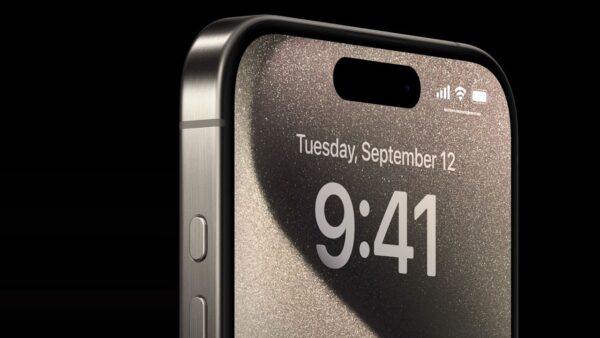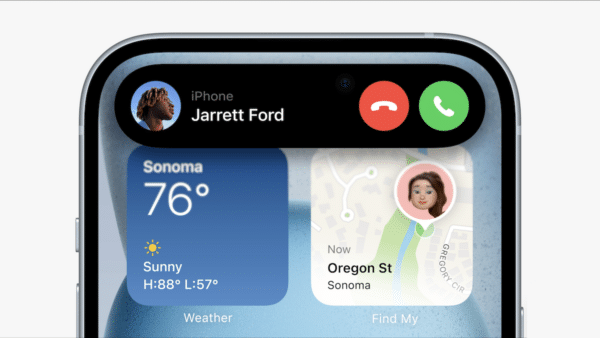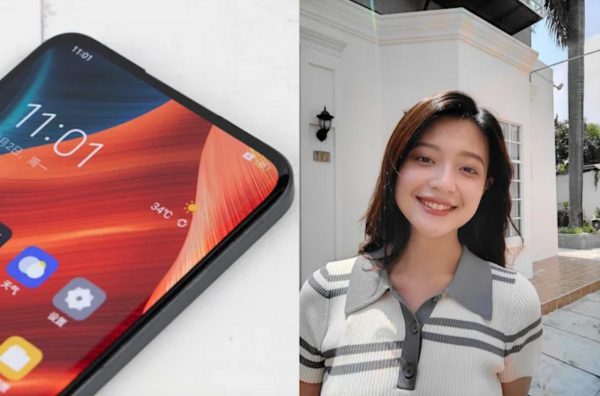In September, Apple unveiled its latest iPhone 15 Pro models. The new smartphone models may not look very different from their predecessors, but they are a world apart from the first-generation iPhone which debuted in 2007.
After introducing the industry’s first 3nm chip A17 Pro, alongside other features like Dynamic Island, 5G support, 120Hz ProMotion tech, Action Button, Pro camera system with up to 5x optical zoom, and other advancements, the next big change expected in the upcoming iPhone Pro lineup is under-the-display selfie camera and TrueDepth camera for facial recognition in iPhone 16 Pro and iPhone 16 Pro Max.
Here are some reasons for why the iPhone 15 Pro and iPhone 15 Pro Max might be the last Pro models to feature a notch.

How authentication methods on an iPhone have evolved over the years?
I believe the evolution of the iPhone’s technology is best represented by the progression of authentication methods in phones. We have categorized iPhones into five groups based on the evolution of their authentication systems.
| Group 1 (Home button) | Group 2 (Touch ID) | Group 3 (Notch with Face ID) | Group 4 (Thinner notch with Face ID) | Group 5 (Dynamic Island with Face ID) | |
| iPhone 1 (2007) | iPhone 5C/ 5S (2013) | iPhone X (2017) | iPhone 12/ 12 mini/ 12 Pro/ 12 Pro Max (2020) | iPhone 14 Pro/ 14 Pro Max (2022) | |
| iPhone 3G (2008) | iPhone 6/ 6 Plus (2014) | iPhone XS/ XS Max (Sep 2018) | iPhone 13/ 13 mini/ 13 Pro/ 13 Pro Max (2021) | iPhone 15/ 15 Plus/ 15 Pro/ 15 Pro Max (2023) | |
| iPhone 3GS (2009) | iPhone 6S/ 6S Plus (2015) | iPhone XR (Oct 2018) | iPhone 14/ 14 Plus (2022) | ||
| iPhone 4 (2010) | iPhone 7/ 7 Plus (2016) | iPhone 11/ 11 Pro/ 11 Pro Max (2019) | |||
| iPhone 4S (2011) | iPhone 8/ 8 Plus (2018) | ||||
| iPhone 5 (2012) | iPhone SE 2 (2020) | ||||
| iPhone SE (first-gen) (2016) | iPhone SE 3 (2022) |
The first generation iPhone debuted in 2007 with thick bezels and a Home Button at the bottom to unlock the smartphone, close apps, and access the Home Screen.
Apple replaced the Home Button with Touch ID in iPhone 5S in 2013 which allowed the company to make the bezels thinner and offer larger screen real estate.
In 2017, the Cupertino tech giant introduced the notch with iPhone X which housed the selfie camera which was also used for facial recognition a.k.a FaceID. The new biometric authentication process was a replacement for Touch ID.
Till 2022, Apple kept the notch in every new iPhone series but reduced its size and shape to shrink the bezels and increase the display’s real estate.
iPhone 14 Pro and iPhone 14 Pro Max launched with a redesigned hole+pill-shaped notch in 2022, the smallest notch on an iPhone ever. Preserving the smartphone’s aesthetics, Apple introduced the “Dynamic Island” which displays a user interface that merges the hole+pill-shaped area into a single pilled-shaped interactive notch to show alerts, notifications, Live Activities, and various animations.
This year, the Dynamic Island expanded to the entire iPhone 15 series just a year after the feature was introduced in iPhone 14 Pro models. Its expansion to iPhone 15 and iPhone 15 Plus indicates that the company has bigger plans for iPhone 16 Pro models.

Dynamic Island in iPhone 15 Pro may be the final version of the notch before under-display Face ID in iPhone 16 Pro
Under-display camera and Face ID tech would enable OEMs to get rid of the notch altogether and offer an all-display viewing experience but the issue with under-screen camera tech is that it produces poor photos with glare or haze which has prevented its widespread adoption.
However, it was reported that ZTE and Oppo have improved third-generation under-screen cameras with no noticeable glare or haze in the photos.

Before the launch of iPhone 14 Pro models, it was reported that the 2022 Pro lineup would feature a pill-shaped hole punch camera and Face ID under the display. Although the tech did not debut in iPhone 14 Pro models, rumor mills speculate that it would eventually be released in iPhone 16 Pro models in 2024.
To substantiate those claims, Apple was granted a patent for under-display FaceID by the U.S. Patent and Trademark Office in March 2023.
Since the iPhone 12 series, Apple has gradually widened the gap between standard and Pro iPhone models by releasing advanced chips, and camera and display upgrades in Pro models, primarily.
Thus, the tech company is expected to introduce the under-display technology in iPhone 16 Pro models, and not iPhone 16 models, to maintain the gap.
| Models | Chip | Camera | Display |
| iPhone 12 | A14 | Dual camera 12 MP Ultra Wide | Super Retina XDR display |
| iPhone 12 Pro | A14 | Pro camera 12MP Main Ultra Wide Telephoto | Super Retina XDR display |
| iPhone 13 | A15 | Dual camera 12 MP Ultra Wide | Super Retina XDR display |
| iPhone 13 Pro | A15 | Pro camera 12MP Main Ultra Wide Telephoto | Super Retina XDR display ProMotion technology |
| iPhone 14 | A15 | Dual camera 12 MP Ultra Wide | Super Retina XDR display |
| iPhone 14 Pro | A16 | Pro camera 48MP Main Ultra Wide Telephoto | Super Retina XDR display ProMotion technology Always-On display Dynamic Island |
| iPhone 15 | A16 | Advanced dual-camera 48MP Main Ultra Wide Up to 2x zoom | Super Retina XDR display Dynamic Island |
| iPhone 15 Pro | A17 Pro | Pro camera system 48MP Main Ultra Wide Telephoto Up to 3x zoom | Super Retina XDR display ProMotion technology Always-On display Dynamic Island |
With the advancement in under-display technology, it seems inevitable that it will debut sooner rather than later. Like the iPhone 5 which was the last to feature Home Button and iPhone 8 was the last to feature Touch ID, in terms of flagship phones, the latest iPhone 15 Pro might be the last to feature a notch.